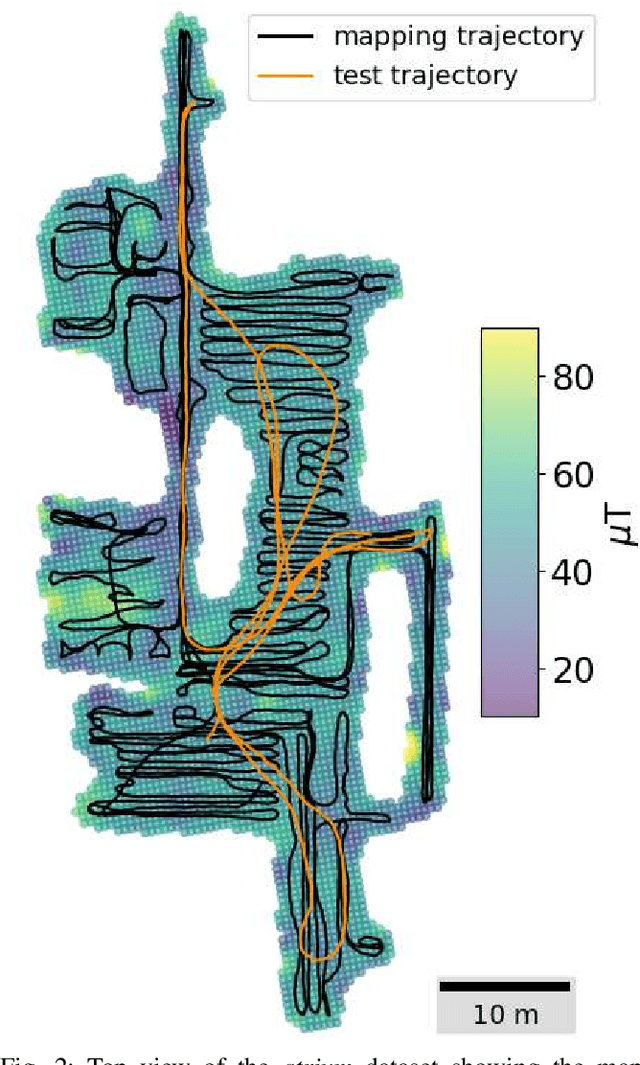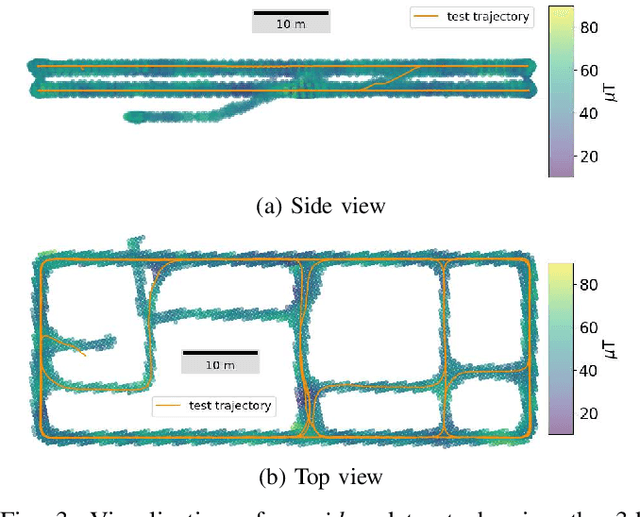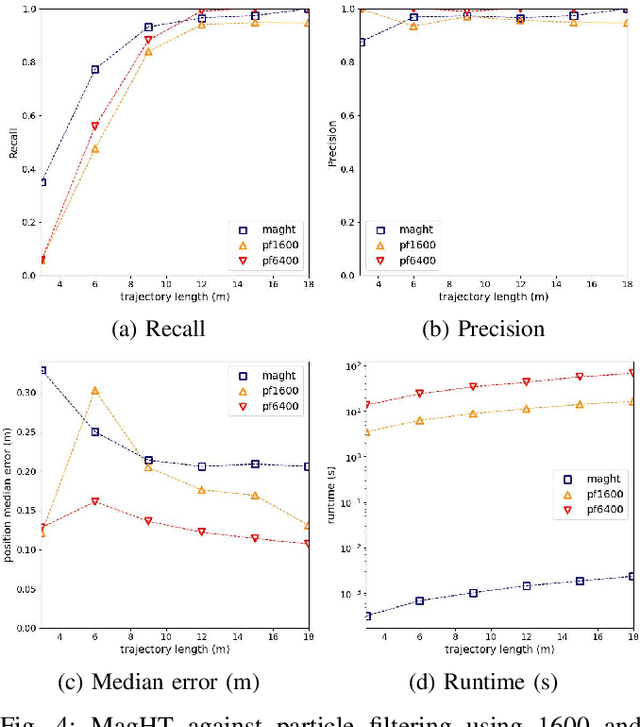Vincent Gay-Bellile
DIASI
MagHT: a Magnetic Hough Transform for Fast Indoor Place Recognition
Dec 08, 2023



Abstract:This article proposes a novel indoor magnetic field-based place recognition algorithm that is accurate and fast to compute. For that, we modified the generalized ''Hough Transform'' to process magnetic data (MagHT). It takes as input a sequence of magnetic measures whose relative positions are recovered by an odometry system and recognizes the places in the magnetic map where they were acquired. It also returns the global transformation from the coordinate frame of the input magnetic data to the magnetic map reference frame. Experimental results on several real datasets in large indoor environments demonstrate that the obtained localization error, recall, and precision are similar to or are better than state-of-the-art methods while improving the runtime by several orders of magnitude. Moreover, unlike magnetic sequence matching-based solutions such as DTW, our approach is independent of the path taken during the magnetic map creation.
RING-NeRF: A Versatile Architecture based on Residual Implicit Neural Grids
Dec 06, 2023Abstract:Since their introduction, Neural Fields have become very popular for 3D reconstruction and new view synthesis. Recent researches focused on accelerating the process, as well as improving the robustness to variation of the observation distance and limited number of supervised viewpoints. However, those approaches often led to dedicated solutions that cannot be easily combined. To tackle this issue, we introduce a new simple but efficient architecture named RING-NeRF, based on Residual Implicit Neural Grids, that provides a control on the level of detail of the mapping function between the scene and the latent spaces. Associated with a distance-aware forward mapping mechanism and a continuous coarse-to-fine reconstruction process, our versatile architecture demonstrates both fast training and state-of-the-art performances in terms of: (1) anti-aliased rendering, (2) reconstruction quality from few supervised viewpoints, and (3) robustness in the absence of appropriate scene-specific initialization for SDF-based NeRFs. We also demonstrate that our architecture can dynamically add grids to increase the details of the reconstruction, opening the way to adaptive reconstruction.
 Add to Chrome
Add to Chrome Add to Firefox
Add to Firefox Add to Edge
Add to Edge